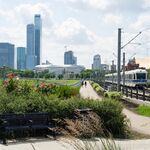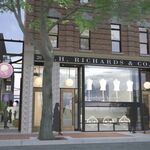thommyjo
Senior Member
Do we know why the other block is delayed?2 out of the 3 blocks of sidewalk -> MUP conversion in Glenora (on 102 ave) are now completed
View attachment 598328
Do we know why the other block is delayed?2 out of the 3 blocks of sidewalk -> MUP conversion in Glenora (on 102 ave) are now completed
View attachment 598328
It will connect with the MUP that crosses the VLW.Do we know why the other block is delayed?
Much of the 2024 announced project work didn't happen this year but I was told it will be completed in 2025 (this particular single block will still be completed this year to finish off this 'large scale' three-block SUP - woot woot).Do we know why the other block is delayed?
...and it looks pretty good2 out of the 3 blocks of sidewalk -> MUP conversion in Glenora (on 102 ave) are now completed
View attachment 598328

How are the raised crossings? Did they do them right this time? Or are they massive bumps still?
No complaints (25mm tires)How are the raised crossings? Did they do them right this time? Or are they massive bumps still?
??Well, the 111 St MUP south of 23 Ave has been a bit of a gong show this past week.
The crossing is blocked off at Saddleback Rd, forcing you to cross 111, then Saddleback again to the east side of 111. That side is much dicier, as the path condition is worse, and there are at least 3 or 4 parking lot entry points for NoFrills and the YMCA. I've only approached it going northbound after the Blackmud bridge; I'm not sure what it is going south, as there don't seem to be any closure signs going that way. I've been detouring through Skyrattler instead, which is a bit better. There is a path connecting to the 111/23 intersection from the neighborhood, but there's probably a foot of gravel and mud on it from all the construction equipment that crosses it daily.??
You can't leave it at that, haha
What's going on?
Oh, what. I thought these were supposed to be raised crossings…
I believe they are for accessibility insteadOh, what. I thought these were supposed to be raised crossings…
Do raised crossings impact accessibility?I believe they are for accessibility instead
Do raised crossings impact accessibility?
I’ve always though of them as potentially impacting drainage, but being massively helpful for a number of reasons:
1) reduce bumps and discomforts for biking, strollers, wheelchairs.
2) add a table top to slow cars to ensure they come to a stop before entering the intersection and reduces speed.
3) helps with snow and ice melt in winter/spring as many of these crossings become full of water and make walking and biking a mess
Maybe there’s something I don’t understand. But to me, every major bike route should be “continuous” and where roads intersect, cars should have to go up and over as they yield. Every major arterial MUP for example would benefit a ton from this.





